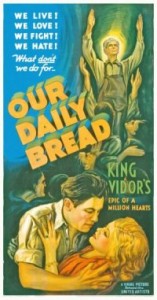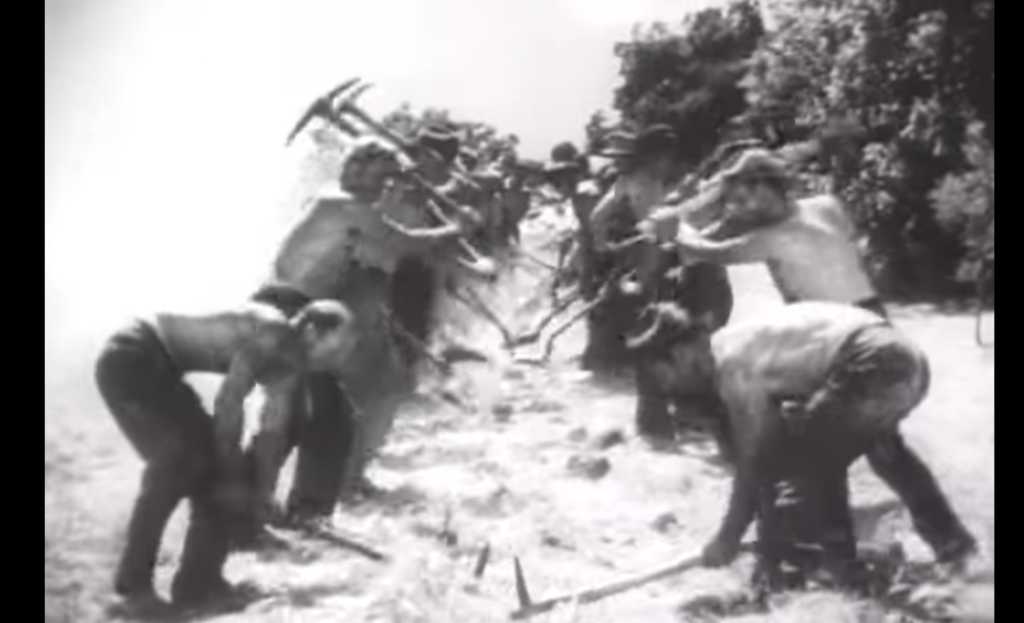“There’s nothing for people to worry about — not when they’ve got the earth!”
|

Synopsis:
During the Great Depression, a destitute city couple named Mary (Karen Morley) and John (Tom Keene) take over Mary’s uncle’s farm. Soon they’ve invited other out-of-work families to join them on their land, and a thriving collective emerges.
|
|
Genres, Themes, Actors, and Directors:
- Collective Activism
- Depression Era
- Farming
- Femmes Fatales
- John Qualen Films
- Karen Morley Films
- King Vidor Films
Response to Peary’s Review:
As Peary notes, this “unique, politically subversive Depression film by King Vidor” — a sequel to Vidor’s “1928 silent masterpiece The Crowd” (but with different lead actors) — suffers from overly simplistic characters, a naively Hollywood air of “Hey-let’s-get-together-and-form-a-cooperative”, and a contrived conflict involving a femme fatale (Barbara Pepper). (According to TCM’s article, “director Vidor admitted that the floozy with the Jean Harlow platinum hair was brought in purely for box office.”) It’s frustrating to watch a film based on such an intriguing and original premise devolving into platitudes and easy fixes — there’s potential here for something much greater. With that said, I agree with Peary that “Vidor’s film works on many levels: its sincerity is to be commended, [and] its vision of an alternate lifestyle is tantalizing.” The final lengthy sequence (in which the collective members work together to dig a ditch which will bring water to their drought-ridden crops) shows evidence of Vidor’s cinematic genius — as well as heavy influence of Soviet-era films.
Redeeming Qualities and Moments:
- A stirring — if hopelessly naive — vision of collectivism in action

- The “famous impressionistic finale” — which, as Peary notes, “is great cinema”

Must See?
Yes, simply for its historical importance.
Categories
Links:
|
One thought on “Our Daily Bread (1934)”
A once-must, for its place in cinema history.
I’m not as bothered about the film’s possible ‘flaws’, and don’t particularly feel that the movie is all that “naively Hollywood” in its approach. That is to say…I found myself wrapped up in its depiction of Depression-era folk and, overall, I find the film essentially believable, and compelling.
It’s true that – even though the film as a whole is a valuable document of its time – the best part is the climactic sequence, which is vibrantly dramatic and alive in its presentation.